Screening of film/video oeuvre 1989–2024
Screenings and talks
Friday, 21 March 2025, 7 pm
Slovenian Cinematheque, Miklošičeva cesta 28, Ljubljana
Programme at Slovenian Cinematheque and Slovenian Film Database (March-June 2025)
21 March / 1 April / 17 May / 3 June
Production: SCCA-Ljubljana and Slovenian Cinematheque
Curators: Vesna Bukovec, Robert Kuret
- About the programme
- Between Body and Space I: Vortex, 21 March
- Between Body and Space II: Process, 1 April
- Between Body and Space III: Vertical Horizon (V-F-X Ljubljana), 17 May
- Between Body and Space IV: Black Waters, 3 June
- Biography
- Photogallery
- Colophone
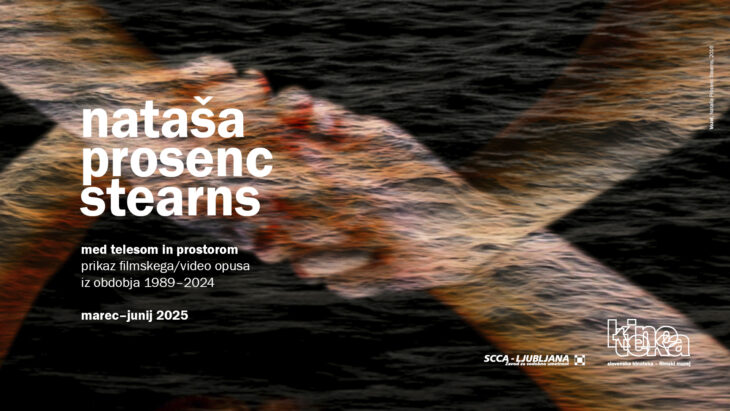
Nataša Prosenc Stearns (1966) is a filmmaker and video artist who works with a wide range of moving image production and presentation, from scriptwriting, filming and editing to spatial installations, video objects and prints. She became interested in video and film while attending the Academy of Fine Arts and Design in Ljubljana, which, just in the late 1980s, introduced a course on video aesthetics. Soon after graduating, she expanded her video work into spatial installations, and the connection between video, film and gallery work is intertwined in much of her oeuvre.
In the early 1990s, Radio Television Slovenia was one of the key platforms for young artists. Nataša Prosenc Stearns worked for several years for the show Osmi dan (Eighth Day) and Kanal A and VPK, which gave her access to various equipment. In 1997, she received a Fulbright scholarship. She went to the California Institute of the Arts, where Miha Vipotnik also studied and one of her most important mentors, the conceptual filmmaker Nancy Buchanan, worked.
At the same time, the 1990s in the US were a time when foreigners, especially if they came from the countries of the former Yugoslavia, were expected to live with images of war, Balkan exoticism and the status of a refugee who could not return, to his own country. Nataša Prosenc Stearns’s work resisted simplistic images of war, which she experienced primarily as an image conveyed by the media. Her work has never engaged in direct political engagement, which has led Holly Willis, Chair of the Media Arts Department at the California School of Cinematic Arts, to declare her an anomaly on the video art scene.
After completing her post-graduate studies, she worked with Emergent Properties in Los Angeles. Then, with her partners, she founded her own production company, Kanalya Pictures, where many of her works have been realized. She began working with American galleries and exhibited for a decade under the auspices of the Ruth Bachofner Gallery.
The presentation of Nataša Prosenc Stearns’ film and video oeuvre, entitled Between Body and Space, is a selection of her work, which includes four programmes: Vortex, Process, Vertical Horizon and Black Waters. The first two programmes are still flirting with the fictional form. At the same time, the other two are already entirely experimental, with works of radically different aesthetics, genres and production contexts within a single strand, created in different periods from the late 1980s to the present day. Her works are characterized by a focus on the body its materiality, which in later works becomes a spectral presence in the form of a silhouette filled with essential elements, with water, one of the central motifs of her oeuvre, predominating; the layering of images (multilayer), the various ways of assembling and combining them in montage programmes, the interconnection of everything living – or rather, material – into one sizeable pulsating organism marked by movement.
A moving image in Nataša Prosenc Stearns’ work often means that as if a painting, petrified in time, suddenly swells, as if it breathes air for a moment – there is no story here, just a pulse. On the other hand, one can also recognize in her work themes that necessarily evoke the fact that life is being organized into human society: alienation, all-pervading consumerism, getting lost in virtual doubles, and the barely recognizable images of war and its victims.
With this programme, we want to continue the tradition of cooperation between SCCA-Ljubljana and the Slovenian Cinematheque, in which we present key authors in the field of video (so far, Miha Vipotnik, Ema Kugler, Marko A. Kovačič in Neven Korda). Films that are otherwise available in the online archive DIVA Station are thus given a new life in a new context on the big screen. The cinema screenings will be complemented by a collaboration with the Slovenian Film Database (BSF), where it will be possible to see the remaining works by Nataša Prosenc Stearns.
Robert Kuret
Between Body and Space I: Vortex
Friday, 21 March at 7 pm

Creation. Existence. Alienation. Ritual.
The birth of the world from the cycle. A Vortex already presupposes a curvature of space that becomes a gravitational field in which something happens. A woman emerges from the Mud, more precisely a mud volcano, and Nataša Prosenc Stearns takes a picture of her in the Californian desert, offering her version of the story of the beginning: without the plan of the face, as one of the elements of nature that remain part of the landscape. The next step from mythological antiquity is the already urban post-independence modernity, where mud becomes concrete in Concrete Man: the building block of the creation of the new man, where the myth of Pygmalion and the fairy tale of Cinderella meet in the form of a silent film, telling a love story in the context of an upper-middle-class woman in post-transition Slovenia. The author explores the theme of alienation in various ways, for example, alienation in the image represented in the media, which in Evening lives its life independently of its “real bearer” and phantasmagorically intimidates her. The conclusion of the series seeks ways out of alienation and finds them in the magical, occult ritual of the sisterly Mother for Dinner and Tango for Fish.
The films were made in radically different periods and contexts: Concrete Man and Evening under the auspices of the Arsmedia production company and co-productions of RTV Slovenia in the 1990s, Tango for Fish produced by RTV Slovenia, Mud, Afterlife, Self Portrait and The Beach as independent projects in the USA in the 2000s, Vortex was part of the larger installation project Gladiators at the Venice Biennale, Construct was made from found footage of the construction site of Biosphere 2 in Arizona, the largest artificial environment facility for life on Mars, while Mother for Dinner was filmed as part of the Maribor European Capital of Culture.
The transition to the digital camera and the independent production context also meant more experimentation with the image, for example, combining lenses with mirrors to achieve a grainy effect (The Beach). During this time, the artist also developed so-called haiku videos – works such as Self Portrait and Afterlife, which were based on spontaneously recorded fragments of reality and formed in an editing process.
Robert Kuret
We thank the RTV Slovenia archive and the Slovenian Film Archive at the Archives of the Republic of Slovenia for loaning film copies.
Robert Kuret will talk with Nataša Prosenc Stearns.
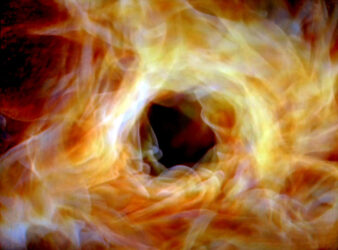
Slovenia/USA, 1999, digital format (shot on 16 mm), 3:4, color, 2′ 30” (courtesy of Modern Gallery Ljubljana)
Images of fire, earth, sand and snow, spinning and disappearing in a circular motion.
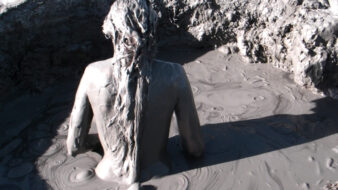
USA, 2009, digital format (shot on video), 1.78, color, 9’ 51’’
A story about the origin of life, in which a woman creates herself out of natural material.
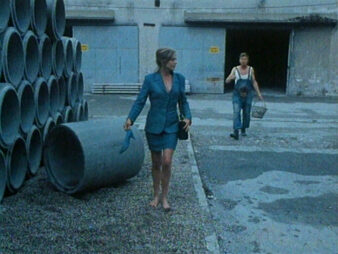
Arsmedia and TV Slovenia, Slovenia, 1995, Beta SP (shot on super 16 mm), 3:4, color, 15′ 29’’
A woman’s shoe gets stuck in fresh concrete in the middle of the city. Its owner, thrown out of her everyday fast pace, is anxious to save the situation. One by one, unexpected events cross her plans.
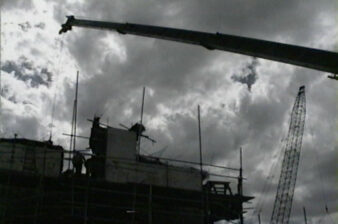
Emergent Properties, USA, 2002, digital format (shot on video), 1.37, color 12′ 30’’
Construction of the Biosphere 2 facility, where an isolated environment was created as a biological experiment.
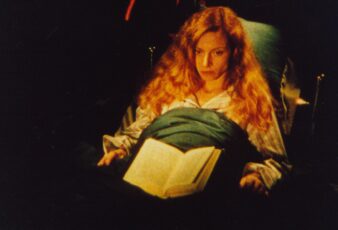
Arsmedia and TV Slovenia, Slovenia, 1999, super 16 mm, 3:4, color, 10’ 57’’
When the loneliness is overwhelming, we start imagining things.

USA, 2010, digital format (shot on HD video), 1.78, color, 2’ 50’’ (courtesy of Nancy Kaye Collection)
A static still-life over time: a bouquet of peonies wilting.
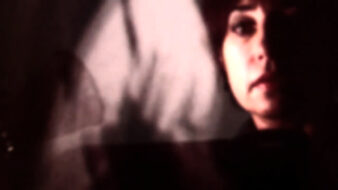
USA, 2010, digital format (shot on video), 1.78, color, 3’ 13’’
The artist portrays herself in the reflection of many glazed family photos.
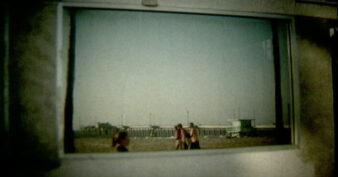
Kanalya Pictures, USA, 2004, digital format (shot on video), 1.78, color, 5’ 51’’
Daily life in the Venice Beach neighbourhood in Los Angeles. In bold colours, slightly grainy textures and blurred perspective, the artist alternates wild, chaotic scenes with calm, almost desolate shots of this vast coastline.
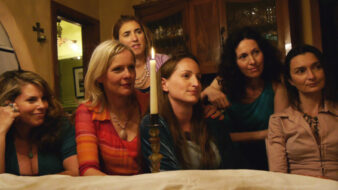
coproducec by ECC Maribor 2012, Slovenia / USA, 2012, digital format (shot on HD video), 1.78, color, 12’ 12”
A seemingly normal visit of six daughters to their mother turns into a shamanistic ritual. The story is based on a 16th-century Slovenian tale about the work of witches.
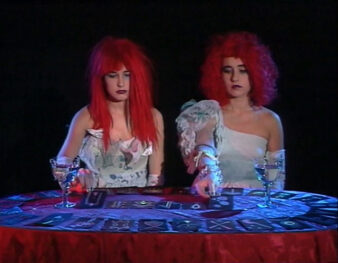
TV Slovenia, Slovenia, 1992, digital format (shot on betacam video), 1.37, color, 4’ 24’’
The eternal theme of the relationship between the sexes is depicted through doubles, accentuated by duplicated details.
Between Body and Space I: Vortex
21 – 28 March
» View at Slovenian Film Database (BSF)
The first program at the Slovenian Film Base features mainly fiction works by Nataša Prosenc Stearns but also offers a glimpse into the beginnings of her work. We start with the oldest work, You Don’t Know Me from 1989, produced by TV Sarajevo, and continue with Over There, produced by the Children and Youth Programme of RTV Slovenia, where Nataša Prosenc – as well as many other videographers – worked at the beginning of the 1990s, for example in the cultural program Osmi dan (Eighth Day). The film Morning corresponds with Evening, which will be screened at the premiere evening at the Slovenian Cinematheque, as together they form a diptych that speaks about human loneliness, once from the position of a woman (Evening), the other from the position of a man (Morning). We conclude with three feature films that Nataša Prosenc Stearns – like she did with Morning – shot in the USA, thematizing the dysfunctionality of the healthcare system (Waiting Room), the ubiquity of the market in interpersonal relations (Our Twenty Minutes), and a portrait of the dysfunctional perspective from the child’s point of view of a girl celebrating her birthday (Surprise).
Robert Kuret
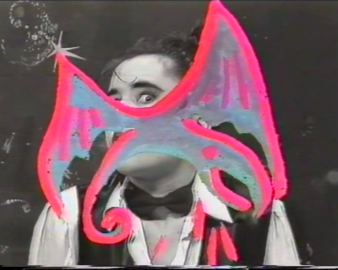
TV Sarajevo, BiH (Jugoslavia), Beta SP, 3:4, color, 1989, 4′ 56”
The dance floor with the two dancers and the woman who learns to dance in their footsteps symbolise two worlds and two generations that are at odds with each other.
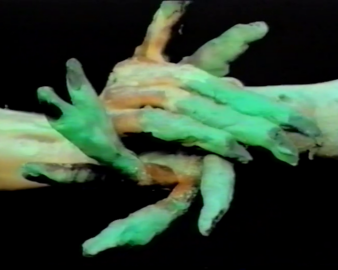
TV Slovenia, Slovenia, Beta SP, 3:4, color, 1991, 7′ 26”
This video can be viewed as a video fairy-tale: it contains all the elements of one. The happening takes place in a forest. We see a dwarf that never shows its face, but on its travels it often encounters other incredible beings.

USA, Beta SP, 3:4, color, 1998, 7′ 58”
When solitude becomes too painful, we start imagining things.The film project Alone Together consists of two short films, Morning and Evening, whose stories unwind between reality and imagination.

Kanalya Pictures, USA, video, 16:9, color, 2003, 10′ 20”
The atmosphere among random patients in the waiting room of their personal doctor on Christmas Eve. Ordinary patients have to wait while important business partners, celebrities and acquaintances of the doctors enter the surgery past the queue. Discontent among those waiting is escalating.
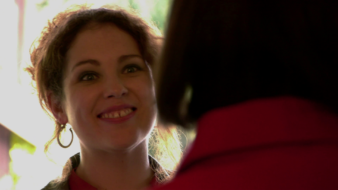
USA, HD video, 16:9, color, 2013, 7′ 40”
A couple’s privacy is invaded by a door to door sales person. Together with incoming calls and text messages, the distractions are escalating. Will they be able to savor their intimate twenty minutes?

ZDA, HD video, 16:9, color, 2014, 10′ 33”
A girl copes with dysfunctional parents. Based on a short story by Lili Potpara.
Between Body and Space II: Process
Tuesday, 1 April at 7 pm
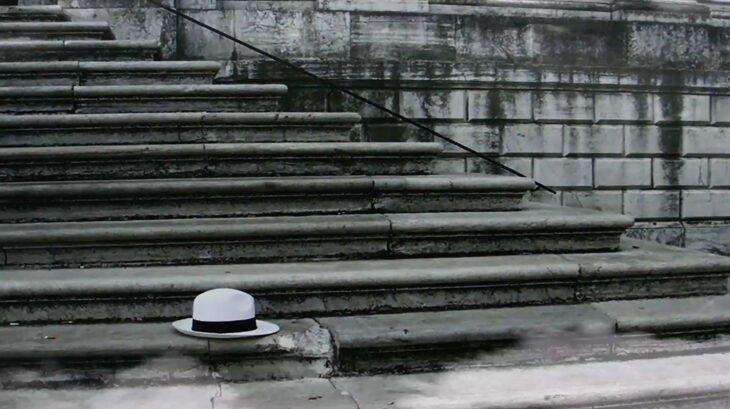
The Double and Time?, short experimental films from the 1990s, ask the question of the meaning of being. At the same time, The Trial of Socrates, an omnibus of twenty-three different authors, tries to answer the question of being as the realization of a particular ethical position.
The author’s graduation film, Time?, was conceived as a parody of the advertisements of the time, taking on the typical image of the evening news at the turn of the millennium: a clock hand counting down the last minutes until 7 pm. The film is characterized by the image of virtual space, which continues the theme of The Double and its questioning of the relationship to the time at man’s disposal: the double is not just materialized labour but the name of the mass reproduction of lives and labour that drive the social machine.
For the medium-length film The Trial of Socrates, Nataša Prosenc Stearns gathered 23 authors from all over the world by invitation and open call, to whom she sent individual parts of the script: the script was divided into smaller units. These short films form a single story of The Trial of Socrates. The principle of the directing ensemble facilitated the realization of a completely independent film produced by Kanalya Pictures, on the one hand, and articulated the journey of the spirit through its omnibus form on the other.
Socrates and those involved in his process thus become transhistorical, transgeographical, transgender, transspecies… Socrates is no longer just a person in a particular place at a specific time but becomes a spirit/ethical principle that can be in several places at once, and that interrogates the idea of distance since it is always already-here. The idea of space-time as a tremendous unified organism also corresponds with some of the ecophilosophies of the new materialism. The Trial of Socrates is – in the context of Nataša Prosenc Stearns’ oeuvre – a film that most explicitly tackles the question of the meaning of life, which being of consciousness resurrected from matter confronts.
Robert Kuret
We thank the RTV Slovenia archive for loaning film copies.
Robert Kuret will talk with Nataša Prosenc Stearns.
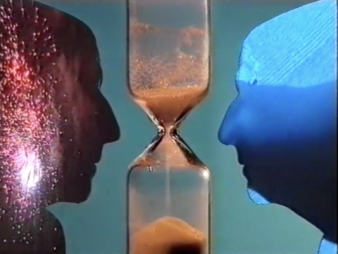
TV Slovenia, Slovenia, 1995, digital format (shot on Beta SP), 3′
The double silhouette of a person delineates two time segments: the passing of daily life, and nocturnal fireworks. Both worlds pass from one shape to another, until they finally freeze into what they actually represent: a human statue.

TV Slovenia, Slovenia (Yugoslavia), 1990, digital format (shot on Beta SP), 3:4, color, 1′
The repeated use of a media image gives it the status of stereotype – in this case a clock announcing the beginning of the television news. The artist wishes to undermine the ‘freezing’ of the stereotypical media image; she transforms it and thus reinstates time in its natural and constant flow.
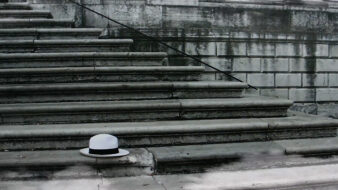
USA/Slovenia/Bulgaria/Italy/Japan/Spain/France/Chile, 1995, digital format (shot on HD video),1.78, color, 59′
An omnibus of 23 women filmmakers and videographers from different cultural backgrounds. Jasna Hribernik and Zmago Lenárdič are also participating from Slovenia. The film is an experiment in one project’s co-existence of different genres. All the films of different lengths, shot in ten countries and seven languages, are linked by the theme of Socrates’ judgment and death. Socrates, as a character, changes from a woman to a man, from an old man to a young woman and from a man to an animal in the first sentence of the verdict.
Between Body and Space II: Process
1 – 8 April
» View at Slovenian Film Database (BSF)
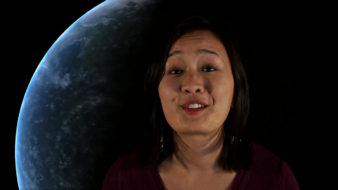
ZDA, HD video, barvni, 2021, 26′ 26” (in English)
A hundred people from different walks of life, different ages, races and sexual orientations, tell stories about what ‘Enough’ means to them, addressing our culture of consumption with huge economic and social disparities.
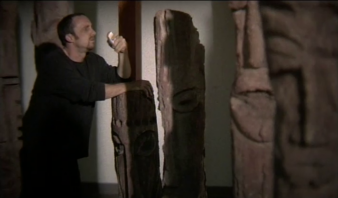
Kanalya Pictures, ZDA, HD video, 2006, 75′ 10” (in English)
A thriller about illegal trade of African art and consequences of colonialism in the west.
Between Body and Space III: Vertical Horizon
Saturady, 17 May at 7 pm
V-F-X Ljubljana
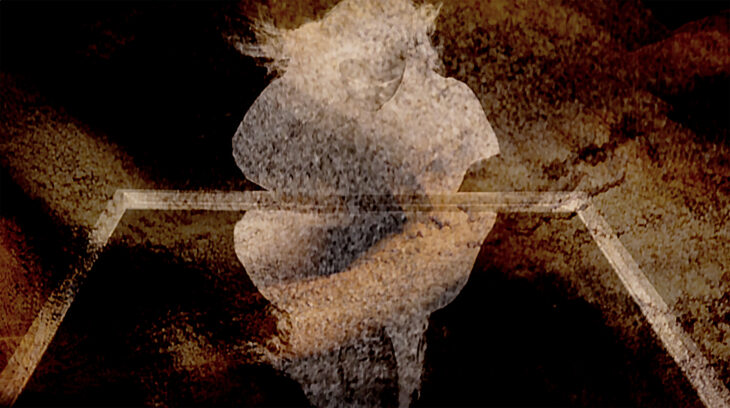
The body begins to disintegrate into parts, to merge with other bodies into indistinct masses, to dissolve into essential elements: in Crossing, the face dissolves into bubbles of water that look like pixels; in Border, the back turns into a desert; in Night Spring, the mouth disintegrates into a mound and returns to a mouth that could also be a wound… Everything is in constant flux, a logic of visual metaphor.
In the metaphor, the back becomes a desert; the mouth becomes a mound. The metaphor, then, explodes established concepts and boundaries from within and enables the metamorphosis of an object into something else, thereby establishing a particular fundamental interconnectedness of things. To continue Timothy Morton’s thought from Hyperobjects: the future and the past are already present, there is already here, the other is already me, and things, objects, and their parts are already mutating.
This series presents works that live double lives, as gallery installations and as film or video objects. Here, the artist creates her works in parallel for different media, with the dramaturgy in the installation happening through the visitor’s movement through the space. In contrast, the narrative establishes the dramaturgy in the film.
Vertical Horizon, for example, was conceived as a labyrinth with low walls in the gallery space where the screens were placed. At the same time, the film recreates the labyrinthine feeling with silhouettes in a dark space, where the camera travels along the wall in an ever-closer close-up, while we can only hear the footsteps without seeing their bearers.
The Border project has gone through various gallery incarnations, where monitors with loops of different videos have been placed on the floor to recreate the feeling of a water surface. The film achieves this fluidity through the transition of two bodies into one and the abstraction of particular body parts through extreme close-ups. In the artist’s later 2010 film Going Where, the gradation towards the close-up becomes the central formal process of abstraction, in which both the boundaries between different objects and the boundaries between the parts of that object are lost.
Robert Kuret
Between Body and Space IV: Black Waters
Tuesday, 3 June at 7 pm
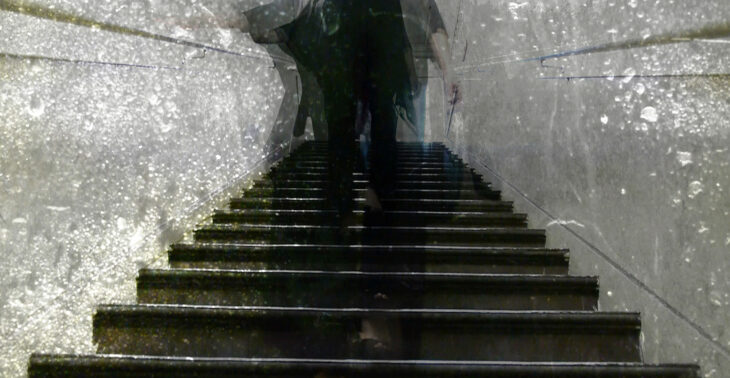
Water is one of the central motifs in Nataša Prosenc Stearns’ work. Due to its turbidity, it is an element of abstraction that fills human silhouettes with elemental materiality.
Gaston Bachelard, who wrote studies on all four essential elements, saw water as one of the key elements by which “we dis objectify objects, deform forms”, thus arriving at the substance beneath the object. Water is also the primary element of reflection and, consequently, of the layering of images. In water, images of depth and surface come together, overlapping each other and thus acquiring metaphorical power. One of the key post-production processes of Nataša Prosenc Stearns is the process of amalgamation, where layers of images not only overlap but also influence each other, become contained in each other, and become visible in each other.
Most of the works in this series have been conceived in the context of spatial video installations linked to gallery and non-gallery spaces. Quite a few of the works live a double life, gallery and film, showing the differences in the context of the two media, but also in the different gallery installations of the same project; for example, the texture and material of the wall on which the image is projected to inscribe itself into it, making it ripple like the reflective surface of the water, thus becoming another layer of the image.
Some of her works have also been created in other contexts, for example, on the theatre stage, such as the opera code L, in which she collaborated with her long-time collaborator, composer Milko Lazar. Here, the artist used excerpts from other works (Caryatids and Hotel Diary) and a layering technique using movable semi-transparent screens on which images from four projectors were combined, replacing the classical set design. As the images seeped through the screens, combinations that were impossible to predict appeared, creating visually complex, layered abstract images typical of the work of Nataša Prosenc Stearns.
Robert Kuret
The screening will be preceded by a lecture by Dr Maja Manojlović, media and film theorist and lecturer at the University of California, Los Angeles (UCLA).
 Visual artist and filmmaker Nataša Prosenc Stearns (1966) earned her BA at the Academy of Fine Arts and Design in Ljubljana. She moved to Los Angeles on a Fulbright Grant for her MFA at California Institute of the Arts. Her body of work ranges from single-channel videos, video installations, short and feature films to photo-collage prints. She explores innovative strategies in storytelling and visual expression and is known for creative use of non-gallery spaces and large multi-channel installations. Her areas of artistic exploration include alienation and identity, movement and metamorphosis. Transition is organic to her own life, as she has been crossing the Atlantic Ocean from her home in Slovenia to her other home in the United States for the last 25 years. The various abstractions of the body imply a struggle against masculinist presuppositions, orders, and hierarchies. She has developed a visual language that integrates seemingly unrelated spaces and figures. This allows her to address another of her chosen topics – the interconnectedness and unity of all things. Her works seek wholeness or fusion, a personal and social identity, that never seems entirely settled, never completely finished.
Visual artist and filmmaker Nataša Prosenc Stearns (1966) earned her BA at the Academy of Fine Arts and Design in Ljubljana. She moved to Los Angeles on a Fulbright Grant for her MFA at California Institute of the Arts. Her body of work ranges from single-channel videos, video installations, short and feature films to photo-collage prints. She explores innovative strategies in storytelling and visual expression and is known for creative use of non-gallery spaces and large multi-channel installations. Her areas of artistic exploration include alienation and identity, movement and metamorphosis. Transition is organic to her own life, as she has been crossing the Atlantic Ocean from her home in Slovenia to her other home in the United States for the last 25 years. The various abstractions of the body imply a struggle against masculinist presuppositions, orders, and hierarchies. She has developed a visual language that integrates seemingly unrelated spaces and figures. This allows her to address another of her chosen topics – the interconnectedness and unity of all things. Her works seek wholeness or fusion, a personal and social identity, that never seems entirely settled, never completely finished.
Her work has been shown internationally, including at the Venice Biennale, the Douloun Museum of Art in Shanghai, ARCO Fair Madrid, Tel Aviv Museum of Art, Circulo de Bellas Artes, Madrid, and others. Her videos and films have been screened at SXSW, Films de femmes Paris, AVIFF Cannes, Brooklyn Film Festival, Chicago Independent Film Festival, Pacific Film Archives Berkeley, RedCat at Disney Music Hall in Los Angeles and other venues. She is a recipient of The Soros Grant, The Durfee Grant and The Prešeren Fund Award – the Slovenian award for outstanding achievement in art. Her videos are also featured in the contemporary opera code L by composer Milko Lazar, who is also the composer of the music for several of her works.
Between Body and Space I: Vortex
21 March 2025, photo: Matjaž Rušt
Between Body and Space II: Process
1 April 2025, photo: SCCA-Ljubljana archive
Curators: Vesna Bukovec, Robert Kuret
Co-production: SCCA-Ljubljana/DIVA Station and Slovenian Cinematheque
Partner: Slovenian Film Database (BSF)
Supported by: Ministry of Culture of the Republic of Slovenia, City of Ljubljana – Department of Culture
Thanks: Maja Manojlović, Rok Omahen, RTV Slovenia, Slovenian Film Archive, Slovenian Film Centre, Slovenian Film Database
![]()
![]()
![]()
![]()
![]()
![]()

























